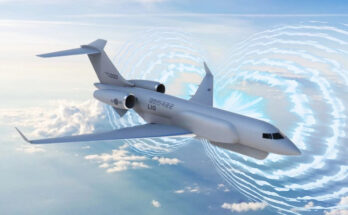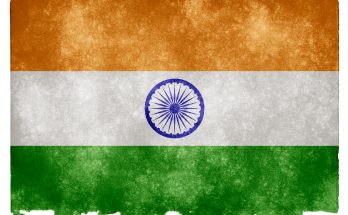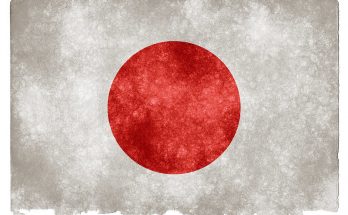While the geopolitical focus of Washington policymakers currently appears firmly directed towards Ukraine and Gaza, the recent meeting between the leaders of Japan and the U.S. reinforced a growing security relationship made ever more crucial by the shifting regional balances in the Indo-Pacific region.
During a state visit by Japan’s Prime Minister Fumio Kishida to the White House on April 10, U.S. President Joe Biden declared that the two countries are undergoing their most significant upgrade to their alliance since the signing of a mutual defense treaty in 1960.
Biden noted the shifts in the relationship over the three years since he came into office, with the war in Ukraine and China’s ongoing military buildup and aggressive posture in the East and South China Seas helping to bring the two partners closer together than ever.
A Joint Statement issued following the meeting between the two leaders noted the ongoing progress Japan is making in enhancing its defense capabilities.
A tectonic shift in Japan’s approach began in December 2022, when Kishida announced that Japan would be doubling its defense spending over a five-year period. The initiative will, in effect, bring Japan’s topline annual defense budget up to 2 percent of GDP, far eclipsing the longstanding informal budgetary cap of 1 percent of GDP put into place under Prime Minister Takeo Miki in 1976 to deflect domestic criticism over military spending.
Further steps taken by Japan include the procurement of 400 Tomahawk cruise missiles from the U.S. to provide the island nation with a counterstrike capability, as well the standing up of the Japan Self-Defense Forces (JSDF) Joint Operations Command enabling an enhanced command-and-control (C2) capability for its three branches (air, maritime and land).
Though Japan is doing its part in upgrading its national defense capability, it nonetheless must still rely on regional partners – particularly its closest and most powerful ally – as it seeks to build sufficient deterrent capability to offset the expansion of China’s People’s Liberation Army (PLA) forces.
While Kishida’s primary focus during the visit was to remind Japan’s American partners of the growing security risks in the Indo-Pacific region, a secondary aspect was highlighting opportunities for closer strategic cooperation between the two longstanding partners.
The latter element drove the joint statement released by the White House on April 10, which noted multiple new strategic initiatives, including: the bilateral upgrading of each nation’s respective C2 frameworks; the deepening of Intelligence, Surveillance and Reconnaissance (ISR) cooperation and Alliance information sharing through the Bilateral Information Analysis Cell; reaffirmation of a Glide Phase Interceptor (GPI) cooperative development program to counter hypersonic threats; announcement of future cooperation on a networked air defense architecture between the U.S., Japan and Australia; potential inclusion of Japan in the AUKUS strategic partnerships Pillar II advanced capability projects; and finally, the convening of a forum on Defense Industrial Cooperation, Acquisition and Sustainment (DICAS).
The DICAS forum will be spearheaded by the U.S. Department of Defense and Japan’s Ministry of Defense and involve identifying areas where the respective industries of both nations could partner to meet critical capabilities challenges and maintain force readiness. The latter element covers sustainment of forward-deployed U.S. Navy ships and U.S. Air Force aircraft at Japanese commercial facilities, a significant factor as nearly 55,000 American forces are deployed on Japan’s territory.
The multiple aspects of future cooperation outlined in the joint statement reveals how fast the security environment is changing in the Indo-Pacific region, with the former U.S.-led regional status quo giving way to China’s expanding influence and an increased People’s Liberation Army Navy (PLAN) presence beyond Asia’s first island chain.
For Japan, with perceived threats China and North Korea located in nearby proximity, the need for a more robust defense component, ironclad strategic relationships, stable supply chains, and a credible military deterrent are each of paramount importance.
Steps to meet each of these needs have been taken, starting under the administration of former Prime Minister Shinzo Abe, who pushed to ease a constitutional ban on Japan’s ability to engage in collective self-defense, loosened the country’s self-imposed weapons export restrictions, deepened military-to-military relations with the United States under the April 2015 revised bilateral defense guidelines, and launched the formation of a new marine amphibious brigade. It was also Abe who announced to the Japanese Diet (legislature) on March 3, 2017, that this longtime self-imposed restriction would no longer bind his administration (tough the limit itself was never enshrined into law).
Along with a stronger defense posture and military capability, Japan is also committed to its Free and Open Indo-Pacific (FOIP) Vision, first articulated by the Abe administration, and then updated by the Kishida government in March 2023.
Under this policy Japan seeks to ensure – with like-minded partners – freedom of the seas, respect for international law, and the use of dialogue over force to settle disagreements and maintain peace in the broader region. Crucial to this vision is respect for sovereignty and territorial integrity and opposition to unilateral changes to the status quo. This, of course, appears worded with China and its broad East and South China Sea claims and island reclamation projects in mind.
For Japan, having close partnerships with Australia and the United States is vitally important if it is to achieve the goals of its FOIP vision and ensure its own national security.
It was Japan, under Abe, that initiated the Quadrilateral Security Dialogue – more commonly referred to as The Quad – with Australia, India, and the United States back in 2007. Together those four partners issued a joint statement in March 2021 declaring a shared vision for a free and open Indo-Pacific and a rules-based order in the East and South China Seas to counter Beijing’s maritime claims.
The Kishida administration arrived in Washington in early April with concerns about how the United States might manage strategic competition with Beijing going forward, and ready to remind its American ally of the need to have a clearly outlined and coordinated joint approach for the U.S.-Japan security partnership.
While it appears to have achieved greater clarity and forward momentum with the latter, the former remains in question – particularly as the United States faces a presidential election year.
Policymakers in Washington, however, are keenly aware of the need for dependable allies both near and abroad as the U.S. confronts the new era of great power competition. Thus, the strategic trilateral AUKUS security partnership between Australia, Britain, and the U.S. represents a significant push to build upon longstanding ties and deepen advanced technology sharing and joint development of cutting-edge defense platforms.
Which makes the announcement by the White House to invite Japan as a potential partner in AUKUS Pillar II even more noteworthy.
Though the step had been expected, joining the trilateral partnership would enable Japan to join the three countries in developing advanced capabilities in areas including artificial intelligence (AI), cyberspace, quantum technologies, undersea autonomous vehicles, electronic warfare, deep space advanced radar, and hypersonic and counter-hypersonic missile technologies.
Though Kishida did not address Japan potentially becoming involved with AUKUS in his address to Congress, there is little doubt Tokyo would join the Pillar II initiative if extended an invitation.
After all, Kishida and his government are extremely aware of the dangerous trends in Japan’s neighborhood, the vulnerability of the island nation that an invasion of Taiwan by China would expose, and the need to build out national defenses as quickly as possible. The hope in Tokyo is that the United States remains aware – and committed, too.
Dan Darling is Forecast International’s director of military and defense markets. In this role, Dan oversees a team of analysts tasked with covering everything from budgeting to weapons systems to defense electronics and military aerospace. Additionally, for over 17 years Dan has, at various times, authored the International Military Markets reports for Europe, Eurasia, the Middle East and the Asia-Pacific region.
Dan's work has been cited in Defense News, Real Clear Defense, Asian Military Review, Al Jazeera, and Financial Express, among others, and he has also contributed commentary to The Diplomat, The National Interest and World Politics Review. He has been quoted in Arabian Business, the Financial Times, Flight International, The New York Times, Bloomberg and National Defense Magazine.
In addition, Dan has made guest appearances on the online radio show Midrats and on The Media Line, as well as The Red Line Podcast, plus media appearances on France 24 and World Is One News (WION).




